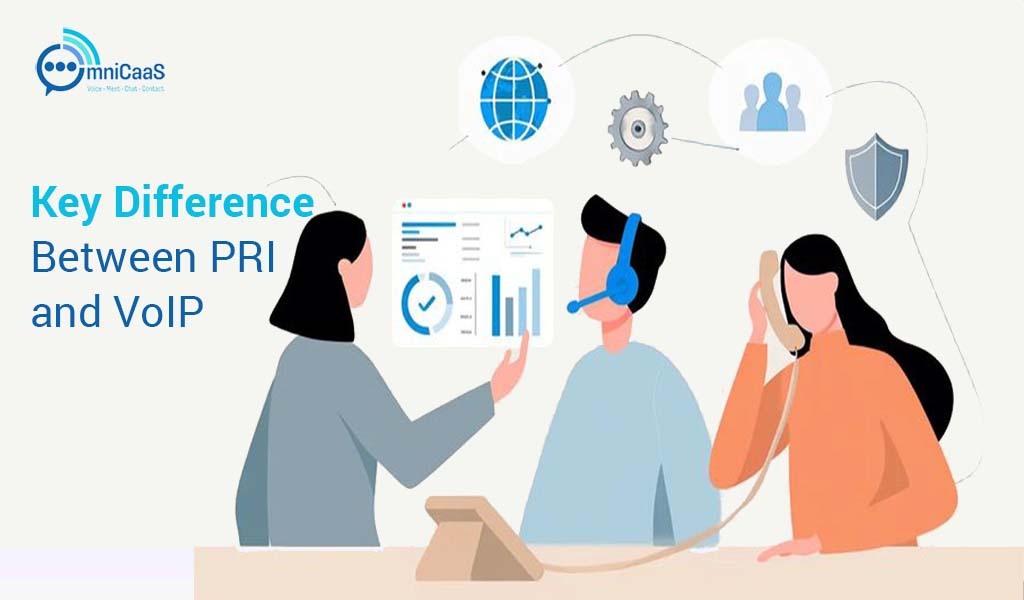
In the world of business communication, choosing the right phone system can be the difference between smooth collaboration and constant frustration. For years, Primary Rate Interface (PRI) circuits were the gold standard for enterprise telephony. Today, however, Voice over Internet Protocol (VoIP) and cloud-based UCaaS solutions have transformed how companies connect, offering more flexibility, scalability, and features.
PRI vs. VoIP is not simply a matter of “old vs. new.” Each technology has distinct strengths and limitations depending on your business size, industry, and communication needs.
What is PRI (Primary Rate Interface)?
Primary Rate Interface (PRI) is a digital telephony standard built on ISDN (Integrated Services Digital Network). Instead of relying on analog phone lines, PRI divides a physical circuit into multiple 64 kbps channels that carry voice calls.
- In North America and Japan (T1 lines), a PRI phone system typically delivers 23 bearer (B) channels for voice/data and 1 data (D) channel for signaling.
- In Europe and most of the world (E1 lines), PRI circuits provide 30 B channels + 1 D channel.
This structure means that a single PRI line can handle 23 or 30 concurrent calls, making it historically ideal for call-heavy businesses like hotels, call centers, and large offices.
Since PRI is a circuit-switched technology, bandwidth is dedicated. Voice calls are reserved on fixed channels, which ensures predictable quality. But this also means scaling capacity requires installing additional circuits, often at a high cost and with long lead times.
What is VoIP (Voice over Internet Protocol)?
Voice over Internet Protocol (VoIP) is a technology that transmits voice as data packets over the Internet or private IP networks. Instead of reserving fixed channels like PRI, VoIP dynamically uses available bandwidth to place and receive calls.
Unlike the PRI phone system, VoIP isn’t limited to traditional desk phones. It can be delivered through:
- On-premise IP PBX systems running SIP trunking.
- Cloud-hosted PBX platforms managed by a provider.
- UCaaS (Unified Communications as a Service) platforms that bundle calling with video conferencing, team chat, and collaboration tools.
Because VoIP is software-driven, it’s highly flexible. Employees can make and receive business calls from softphones, mobile apps, desktops, or desk phones, all connected through a single system.
Key Differences Between PRI and VoIP

Although both PRI (Primary Rate Interface) and VoIP (Voice over Internet Protocol) are designed to support voice communications, their structure and delivery methods make them very different in practice. Let’s break down the most important differences when it comes to PRI vs. VoIP:
1. Transport Technology
PRI relies on circuit-switched telephony, which means that a physical circuit (T1/E1 line) is divided into dedicated 64 kbps time slots reserved for calls. Once a call is active, that time slot is locked for the entire duration of the conversation.
VoIP, on the other hand, uses packet-switched technology. Your voice is digitized, broken into small packets, and transmitted over an IP network (the internet or a private network). Packets are reassembled at the other end. This allows voice to share the same network infrastructure as your data, but it also introduces variables like latency and jitter that must be managed.
2. Capacity Model
With PRI, capacity is fixed. Each T1 line gives you 23 simultaneous call channels, and each E1 line offers 30 channels. If your business exceeds that limit, you’ll need to purchase and install another entire PRI line, even if you only need a few extra channels.
With VoIP or SIP trunking, capacity can be added or reduced in much smaller increments. Many providers allow you to scale by a single channel or by user licenses, making it far more cost-efficient for businesses with fluctuating call volumes.
PRI is best for companies with stable, predictable call traffic, while VoIP is better for organizations that need scalability and flexibility without committing to large infrastructure investments.
3. Infrastructure Requirements
The PRI phone system requires dedicated physical circuits from a telecom provider and hardware such as PRI interface cards for your on-premise PBX. This means upfront installation costs, ongoing maintenance, and reliance on telco provisioning when scaling.
VoIP only requires an internet connection, an IP-enabled PBX or UCaaS platform, and supporting equipment like routers and Session Border Controllers (SBCs). Proper configuration of Quality of Service (QoS) ensures that voice packets get priority over other traffic.
PRI can be harder and slower to deploy across multiple sites, while VoIP leverages existing IP infrastructure and can be deployed rapidly, even across distributed or remote teams.
4. Emergency Services and Power Dependence
PRI is physically tied to the telco’s central office and continues to function as long as your PBX and on-site equipment have power. Emergency calls are routed natively through the carrier’s system.
VoIP requires careful configuration to ensure that emergency calls display the correct physical address. Since VoIP systems rely on local internet and power, businesses must plan for backup power solutions (like UPS units) and redundant connectivity.
PRI has an edge in simplicity for emergency calling, but with proper planning and redundancy, VoIP can provide the same level of reliability while giving businesses more flexibility in handling remote workers.
5. Feature Velocity and Innovation
PRI is primarily voice-focused. While reliable for calling, it doesn’t natively support advanced features like video conferencing, messaging, or cloud integrations. To add those, businesses often need additional systems or third-party software.
VoIP (and UCaaS platforms built on it) evolve much faster. Providers can push new features via software updates, giving users access to softphones, video calls, screen sharing, CRM integrations, call analytics, AI-driven routing, and more without additional hardware.
If your business wants a modern, unified communication system that keeps pace with technological innovation, VoIP is the clear choice. PRI, while stable, is a legacy option with limited growth potential.
PRI vs. VoIP: Comparison Table
| Feature / Factor | PRI (Primary Rate Interface) | VoIP (Voice over Internet Protocol) |
| Call Quality | Very stable and predictable due to dedicated lines | High quality, but dependent on internet speed and network configuration |
| Infrastructure Needed | Physical telephone lines, PBX hardware, ISDN circuits | Internet connection, routers, switches, IP phones or softphones |
| Scalability | Limited – must add 23/30 channels at a time | Highly scalable – add/remove users instantly |
| Flexibility | Rigid, fixed capacity | Extremely flexible with features, integrations, and mobility |
| Reliability | Excellent in poor internet areas; isolated from network outages | High reliability when paired with QoS, redundancy, and a good UCaaS provider |
| Security | Naturally secure due to dedicated lines | Secure with proper encryption, SBCs, MFA, and VoIP cybersecurity essentials |
| Advanced Features | Limited compared to modern systems | Rich features: video, messaging, voicemail-to-email, analytics, CRM integration |
| Remote Work Support | Very limited | Excellent – softphones and mobile apps enable location flexibility |
Advantages of PRI
1. Predictable Call Quality
With a PRI phone system, calls run over dedicated time-division multiplexing (TDM) channels, which means voice traffic never competes with data traffic for bandwidth. Unlike VoIP, which can experience call quality fluctuations due to internet speed or network congestion, PRI provides a consistently stable experience. For organizations that prioritize crystal-clear, reliable voice quality, such as financial institutions, law firms, or healthcare providers, this predictability remains a major selling point.
2. Stable with Legacy Equipment
Many enterprises, especially those that invested heavily in legacy PBXs, fax machines, or specialized TDM-based hardware, find PRI to be the most seamless option. It’s natively compatible with these older systems without requiring adapters, gateways, or significant upgrades. For businesses that are not ready, or financially able, to modernize their communication infrastructure, PRI ensures continuity without forcing disruptive overhauls.
3. Telco-Grade Signaling
PRI’s ISDN D-channel signaling has been in use for decades and is a proven, standardized protocol. It ensures stable, carrier-grade reliability for functions like caller ID, call setup, call teardown, and call routing. This signaling is also highly consistent across telecom carriers worldwide, which makes integration straightforward for multi-site enterprises or global businesses.
4. Deterministic Capacity Planning
With PRI, the channel capacity is fixed – 23 concurrent calls on a T1 line or 30 calls on an E1 line. While this might sound rigid, it provides clear predictability. Businesses know exactly how many simultaneous calls they can handle, which makes resource planning simpler. For organizations with stable, predictable call volumes (like hotels or customer service centers with consistent staffing), this deterministic model helps avoid surprises.
5. Resilience in Certain Environments
Because PRI circuits are physically separate from internet connections, they are isolated from many of the risks that affect IP-based services, such as cyberattacks, bandwidth throttling, or local network outages. For businesses in regions with unreliable internet or industries with strict compliance requirements, this isolation can provide peace of mind and an added layer of resilience.
Disadvantages of VoIP
1. Network-Dependent Call Quality
VoIP calls are transmitted as data packets over your network. This means call quality depends directly on the health of your internet connection and network design.
Problems like packet loss, jitter, latency, or bandwidth congestion can cause:
- Delays or echoes in calls.
- Robotic-sounding voices or dropped conversations.
- Inconsistent experience across busy workdays when other data-heavy apps are running.
Businesses operating in regions with unstable internet often need redundant connections or SD-WAN optimization to ensure consistent call quality.
2. Dependence on Power & Emergency Services (E911) Planning
Unlike PRI lines, which are powered directly through the carrier’s copper infrastructure, VoIP requires local power for routers, switches, phones, and other customer-premise equipment (CPE). In the event of a power outage, unless your business has backup power supplies (UPS systems or generators), your phones will stop working.
With PRI, emergency calls automatically route through the carrier’s local switch with the correct address.
3. Expanded Security Surface
Because VoIP traffic travels over IP networks, it introduces security considerations that circuit-switched PRI systems largely avoid. If not properly protected, VoIP can be vulnerable to:
- Toll fraud (hackers exploiting SIP accounts to place unauthorized long-distance calls).
- Denial-of-Service (DoS) attacks that overwhelm the system and disrupt voice services.
- Eavesdropping or call tampering if communications aren’t encrypted with TLS (for signaling) and SRTP (for media streams).
- Phishing and spoofing attempts targeting softphone clients or UCaaS portals.
Without proactive cybersecurity essentials for small businesses, VoIP can expose organizations to significant risks.
4. Potential Vendor Lock-In
Many businesses adopt VoIP through a UCaaS provider. While this offers convenience, it sometimes leads to vendor lock-in, where switching providers becomes difficult due to proprietary integrations, bundled pricing, or reliance on the vendor’s ecosystem.
If the service doesn’t perform well or prices rise, businesses may feel stuck unless they planned for portability.
5. Complexity of Management in Larger Environments
For small teams, setting up VoIP can be quick and easy. But in enterprise or multi-location network environments, ensuring reliable VoIP requires advanced planning:
- Network assessments and upgrades.
- Continuous QoS monitoring.
- Security audits and compliance planning.
- Staff training for remote workers on E911 and security practices.
This management overhead can surprise organizations that expect VoIP to be “plug-and-play.”
Cybersecurity Essentials for Small Businesses
Whether you stick with PRI phone systems or migrate to VoIP/UCaaS, protecting your business communication systems is non-negotiable. While PRI circuits are less exposed to internet-based attacks, they are not immune to fraud or misuse.
1. Enforce Multi-Factor Authentication (MFA)
Administrative portals, VoIP management dashboards, and UCaaS apps often contain sensitive settings that could be exploited if compromised. MFA ensures that even if a password is stolen, attackers cannot gain access without a secondary authentication method. Enabling MFA on all user and admin accounts significantly reduces the risk of unauthorized access.
2. Use Strong SIP Credentials and Access Controls
VoIP systems rely on SIP (Session Initiation Protocol) to set up and manage calls. Weak or default SIP credentials are a common attack vector for hackers trying to exploit phone systems for toll fraud.
Businesses should:
- Require strong, unique passwords for SIP accounts.
- Apply rate limits to prevent brute-force login attempts.
- Geo-restrict SIP traffic to the regions where your business operates, blocking unnecessary international access that could be exploited.
3. Segment Voice Traffic on a Dedicated VLAN
Mixing voice and data on the same flat network increases both performance risks and security vulnerabilities. By segmenting VoIP traffic into its own Virtual LAN (VLAN), businesses can:
- Apply Quality of Service (QoS) to prioritize voice packets and maintain high call quality.
- Reduce exposure by blocking unused ports and protocols on the voice VLAN.
- Limit the blast radius of any potential compromise to the voice environment instead of the entire network.
4. Keep Systems Patched and Updated
Unpatched phones, PBX systems, UCaaS clients, and even Session Border Controllers (SBCs) can become entry points for attackers. Vendors regularly release updates to fix vulnerabilities, so businesses must establish a process to:
- Apply firmware updates to desk phones and routers.
- Keep UCaaS or VoIP softphone apps updated across employee devices.
- Patch SBCs and PBXs in line with vendor recommendations.
A single outdated endpoint can expose the entire system to cyber threats.
5. Monitor Call Detail Records (CDRs) for Anomalies
Fraudulent activity often shows up in call logs before it’s noticed by users. Small businesses should regularly review CDRs (Call Detail Records) to look for unusual activity, such as:
- Sudden spikes in international calls.
- Calls made during non-business hours.
- Abnormally long call durations.
PRI vs. VoIP isn’t about “good vs. bad” – it’s about fit. Choose PRI if you need deterministic TDM channels for a stable, legacy PBX, and your capacity rarely fluctuates. Choose VoIP/UCaaS if you value agility, granular scaling, modern features, and the ability to unify voice, video, and messaging under one platform.
OmniCaaS can help you evaluate options, model total cost, and design a secure rollout aligned to your roadmap and cybersecurity essentials for small businesses.


Post a Comment